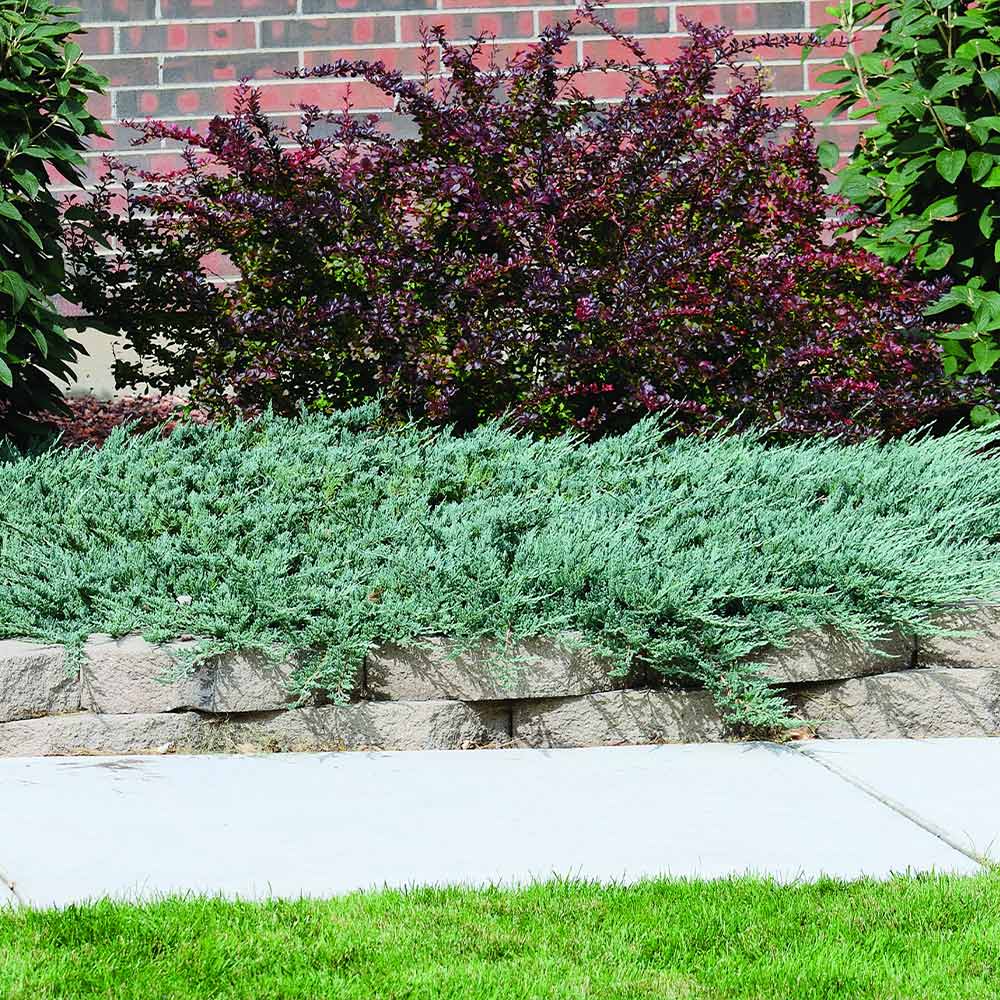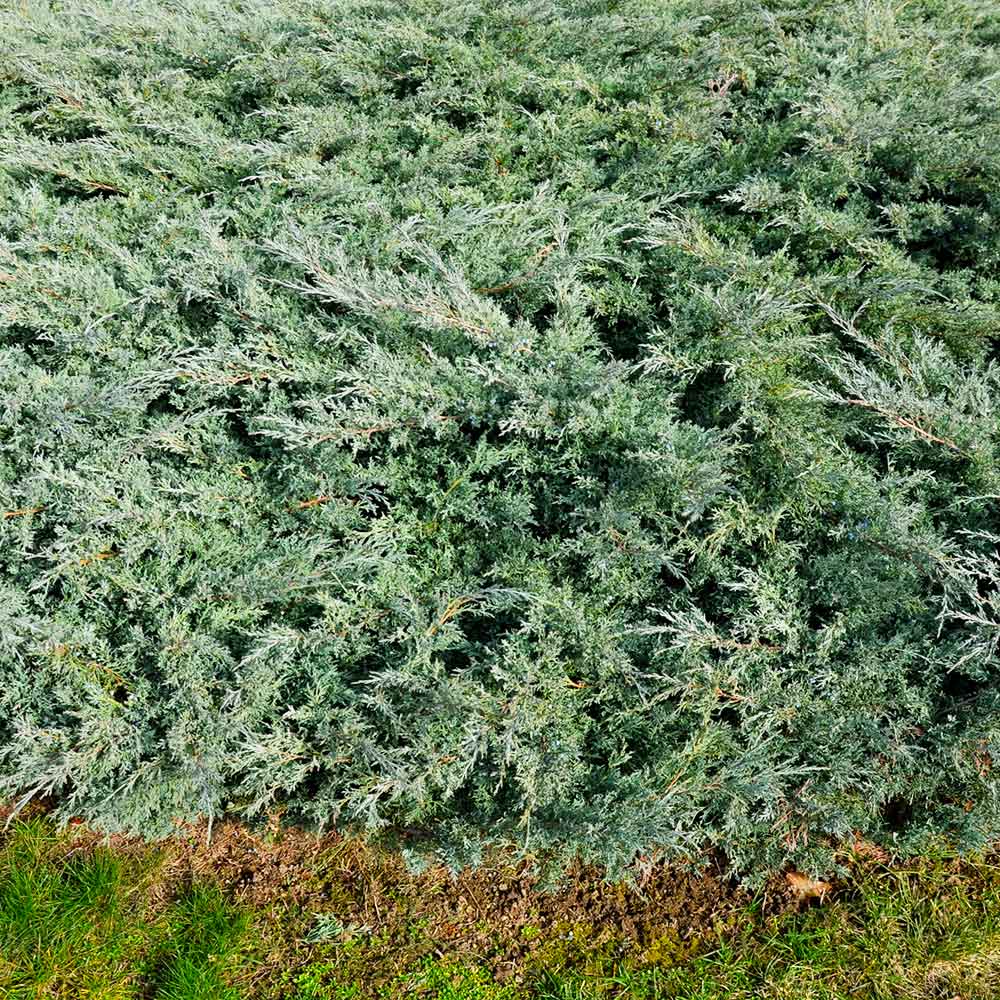Low, Spreading Evergreen Shrub Serves as Ideal Groundcover
Why Blue Rug Juniper?
If you’re looking for a lush, spreading groundcover, the Blue Rug Juniper fits the bill, with erosion control to boot! This low-growing evergreen shrub can be planted on slopes or hills to droop gracefully over ledges. Its bluish-green foliage and characteristic blue berries provide year-round color.
The Blue Rug Juniper can single-handedly cover any bare spots in your landscaping, even mounded areas or hillsides. It typically grows just a foot high, so it won’t overcrowd your taller landscaping, but each plant spreads five to six feet for an impactful display.
Blue Rug Juniper is also a very low-maintenance plant, making landscaping easy on your end. Combine that with its cold-hardiness and planting versatility, and you've got an all around winner.
Why FastGrowingTrees.com is Better
Our Blue Rug Juniper is a proven performer, with dense, evergreen foliage and year-round growth. Plus, we choose the best Junipers on the market and nurture them with care before we ship to you. That means your shrub will arrive at your door stronger and better developed, with a healthy, intact root system that's ready to thrive in your landscape.
We’ve put in the extra work, so you can reap the rewards. Order your Blue Rug Juniper today!
Planting & Care
1. Planting: Junipers thrive in full sun to part sun and adapt to any soil that is well drained. They do like a neutral to acidic soil, so if you know you have an alkaline soil, choose an acidic fertilizer (most fertilizers for evergreens are acidic). Junipers are great "street shrubs" as they tolerate pollution and salt well. After planting, adding a layer of 2 to 3 inches of mulch will help keep the soil moist and protect the lower branches from fungal issues.
2. Watering: For the first few months, water your shrub every week or so. After it is established, you only need to water it during hot periods without precipitation.
3. Fertilizing: Fertilize when planting and yearly in early spring with a slow-release fertilizer.
4. Pruning: Once plants become mature, thin them out by pruning them just a little bit to allow air circulation.





Comment